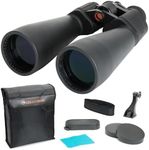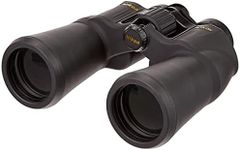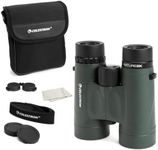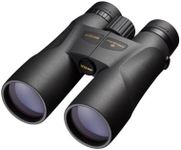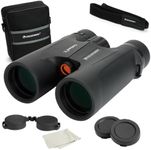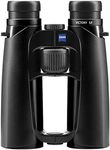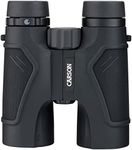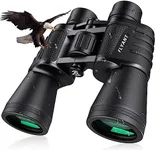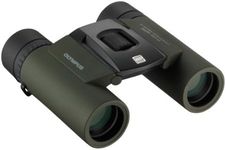Buying Guide for the Best Long Distance Binoculars
When choosing long-distance binoculars, it's important to consider the specific features that will best suit your needs. Whether you're bird watching, stargazing, or attending a sports event, the right pair of binoculars can greatly enhance your experience. Understanding the key specifications will help you make an informed decision and ensure that you select a pair that provides the clarity, magnification, and comfort you require.MagnificationMagnification refers to how much closer the binoculars can make an object appear. It's usually represented as a number followed by 'x', such as 10x. Higher magnification means you can see further, but it can also make the image shakier and reduce the field of view. For long-distance viewing, a magnification of 10x to 20x is often ideal. Consider what you'll be observing; for stationary objects like landscapes, higher magnification might be beneficial, while for moving objects like birds, a lower magnification might be easier to handle.
Objective Lens DiameterThe objective lens diameter is the size of the front lenses, measured in millimeters. This spec is crucial because it determines how much light the binoculars can gather, affecting image brightness and clarity. Larger diameters, such as 50mm or more, are better for low-light conditions and long-distance viewing. However, they also make the binoculars heavier. If you plan to use them in dim lighting or for stargazing, opt for a larger diameter. For daytime use, a smaller diameter might suffice and be more portable.
Field of ViewField of view indicates the width of the area you can see through the binoculars, usually measured in feet at 1,000 yards. A wider field of view allows you to see more of the scene at once, which is helpful for tracking moving objects. For long-distance binoculars, a field of view of around 300 feet at 1,000 yards is common. If you're observing fast-moving subjects or scanning large areas, prioritize a wider field of view. For detailed observation of distant objects, a narrower field might be acceptable.
Weight and SizeThe weight and size of binoculars can affect how comfortable they are to use, especially for extended periods. Larger binoculars with bigger lenses tend to be heavier, which can be tiring to hold. Consider how you'll be using them; if you'll be stationary, weight might be less of an issue. However, if you're hiking or moving around, lighter, more compact models might be preferable. Balance the need for portability with the performance features you require.
Lens CoatingLens coating refers to special treatments applied to the lenses to reduce glare and improve light transmission, resulting in clearer and brighter images. Coatings can range from single-layer to fully multi-coated lenses. For long-distance viewing, fully multi-coated lenses are ideal as they provide the best image quality. If you're using binoculars in bright conditions or for detailed observation, prioritize models with better lens coatings to enhance your viewing experience.
Waterproofing and FogproofingWaterproofing and fogproofing are important features if you plan to use your binoculars outdoors in various weather conditions. Waterproof binoculars are sealed to prevent moisture from entering, while fogproof models are filled with nitrogen or argon gas to prevent internal fogging. If you'll be using your binoculars in humid or wet environments, or if you want to ensure durability and longevity, look for models with these features. They provide peace of mind and ensure clear viewing in all conditions.


